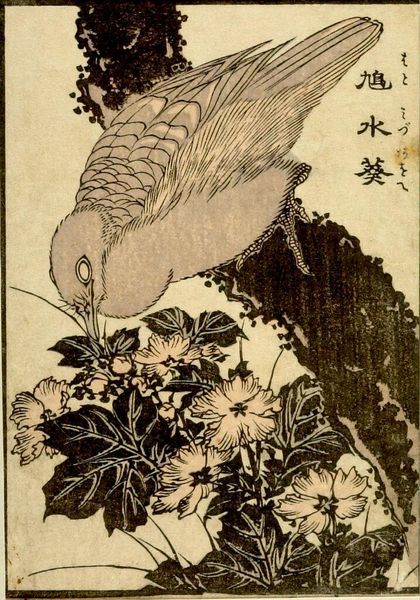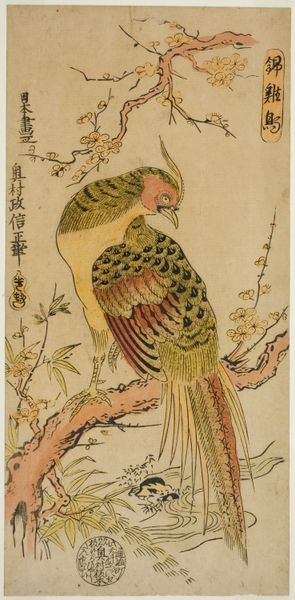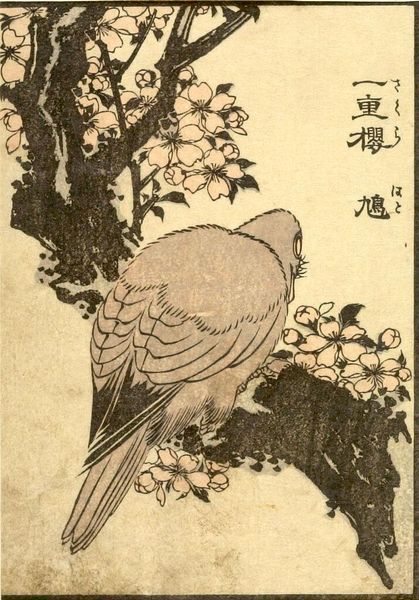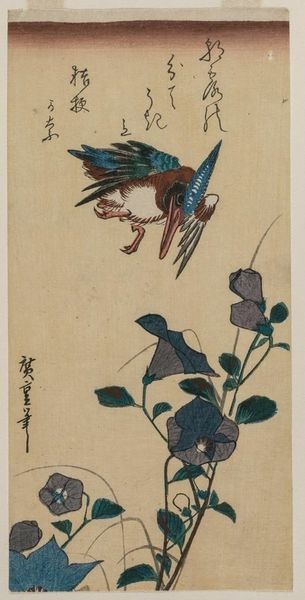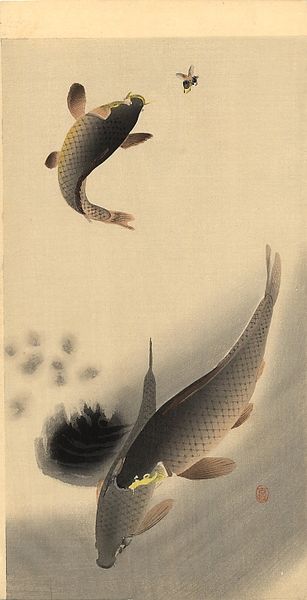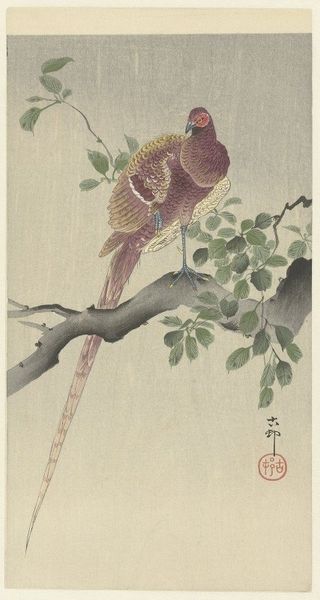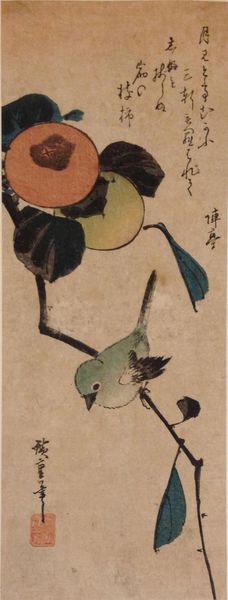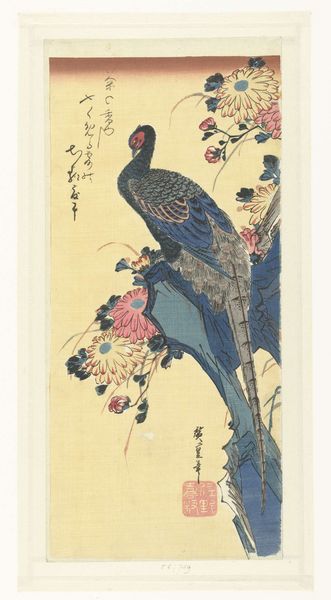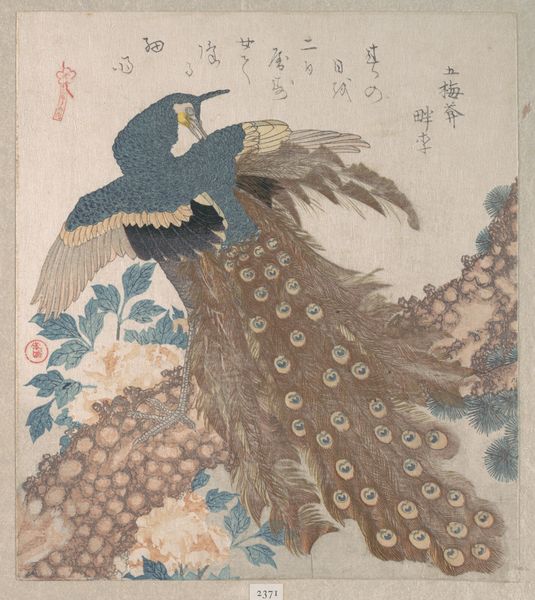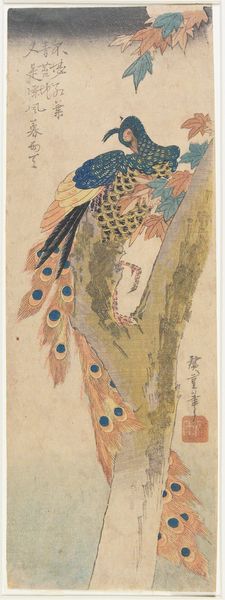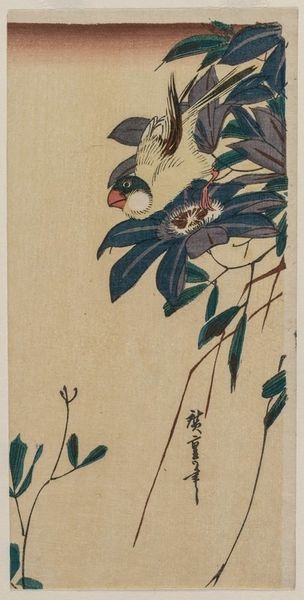
Copyright: CC0 1.0
Curator: Hiroshige's "Crane and Asters" at the Harvard Art Museums strikes me as contemplative. Editor: Yes, the visual harmony is immediately apparent. The artist's delicate rendering of form and his choice of colors evokes a sense of serenity. Curator: Absolutely. In East Asian art, the crane is a symbol of longevity and good fortune. The asters, often associated with autumn, can represent reflection and remembrance. Editor: Note how Hiroshige uses line to create a sense of depth, even within the limited space. See, for instance, the angle of the crane's head. Curator: He directs our gaze downward into a world of layered meaning. The crane, poised, becomes a messenger between realms, doesn't it? Editor: The visual economy, the carefully balanced composition...it all speaks to a refined aesthetic sensibility. Curator: Indeed. This piece resonates with enduring themes—mortality, hope, and the interconnectedness of nature. Editor: A testament to Hiroshige's enduring mastery.
Comments
No comments
Be the first to comment and join the conversation on the ultimate creative platform.

